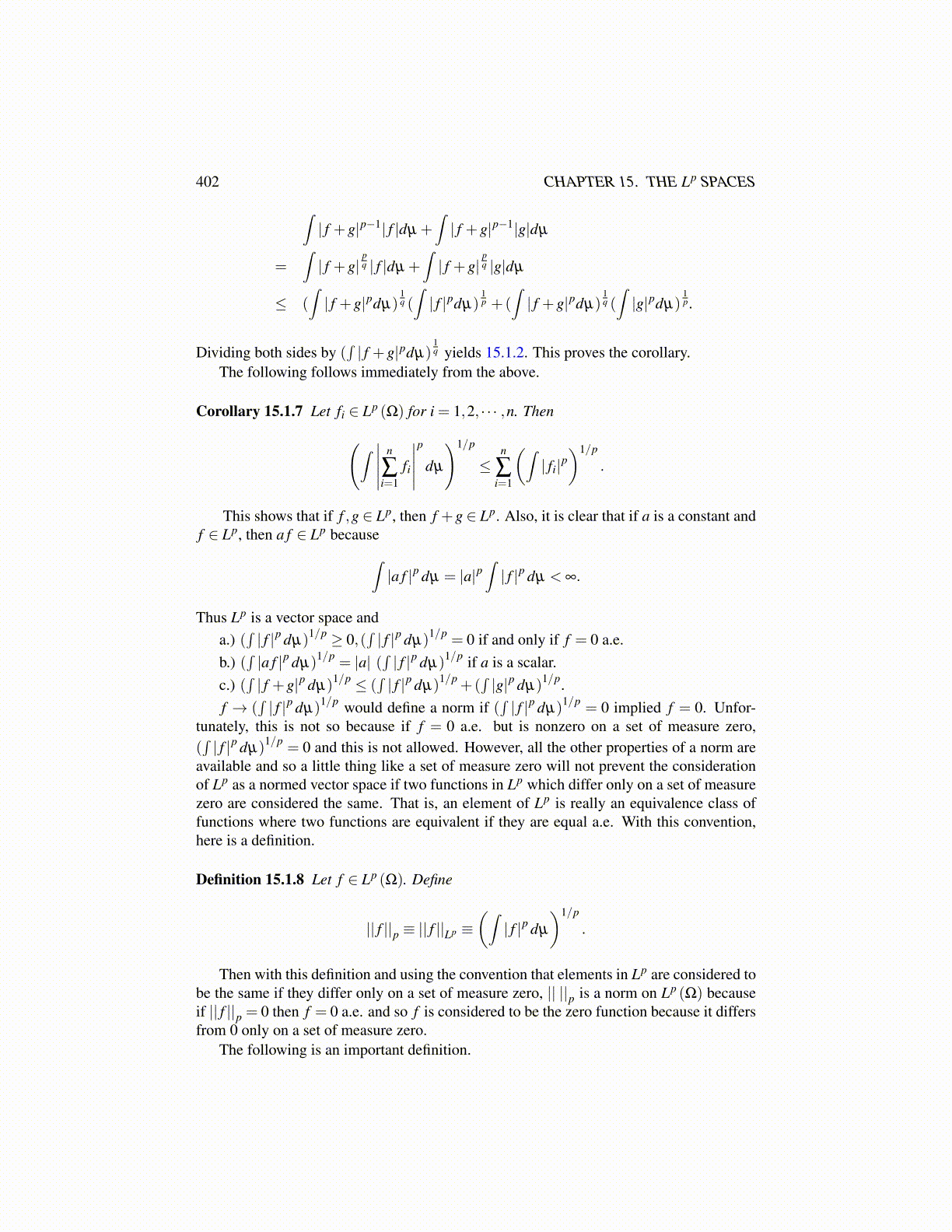
402 CHAPTER 15. THE Lp SPACES
∫| f +g|p−1| f |dµ +
∫| f +g|p−1|g|dµ
=∫| f +g|
pq | f |dµ +
∫| f +g|
pq |g|dµ
≤ (∫| f +g|pdµ)
1q (∫| f |pdµ)
1p +(
∫| f +g|pdµ)
1q (∫|g|pdµ)
1p.
Dividing both sides by (∫| f +g|pdµ)
1q yields 15.1.2. This proves the corollary.
The following follows immediately from the above.
Corollary 15.1.7 Let fi ∈ Lp (Ω) for i = 1,2, · · · ,n. Then(∫ ∣∣∣∣∣ n
∑i=1
fi
∣∣∣∣∣p
dµ
)1/p
≤n
∑i=1
(∫| fi|p
)1/p
.
This shows that if f ,g ∈ Lp, then f +g ∈ Lp. Also, it is clear that if a is a constant andf ∈ Lp, then a f ∈ Lp because∫
|a f |p dµ = |a|p∫| f |p dµ < ∞.
Thus Lp is a vector space anda.) (
∫| f |p dµ)1/p ≥ 0,(
∫| f |p dµ)1/p = 0 if and only if f = 0 a.e.
b.) (∫|a f |p dµ)1/p = |a| (
∫| f |p dµ)1/p if a is a scalar.
c.) (∫| f +g|p dµ)1/p ≤ (
∫| f |p dµ)1/p +(
∫|g|p dµ)1/p.
f → (∫| f |p dµ)1/p would define a norm if (
∫| f |p dµ)1/p = 0 implied f = 0. Unfor-
tunately, this is not so because if f = 0 a.e. but is nonzero on a set of measure zero,(∫| f |p dµ)1/p = 0 and this is not allowed. However, all the other properties of a norm are
available and so a little thing like a set of measure zero will not prevent the considerationof Lp as a normed vector space if two functions in Lp which differ only on a set of measurezero are considered the same. That is, an element of Lp is really an equivalence class offunctions where two functions are equivalent if they are equal a.e. With this convention,here is a definition.
Definition 15.1.8 Let f ∈ Lp (Ω). Define
|| f ||p ≡ || f ||Lp ≡(∫| f |p dµ
)1/p
.
Then with this definition and using the convention that elements in Lp are considered tobe the same if they differ only on a set of measure zero, || ||p is a norm on Lp (Ω) becauseif || f ||p = 0 then f = 0 a.e. and so f is considered to be the zero function because it differsfrom 0 only on a set of measure zero.
The following is an important definition.